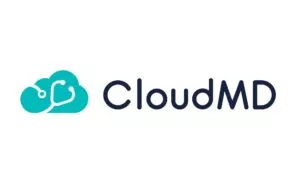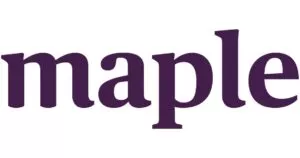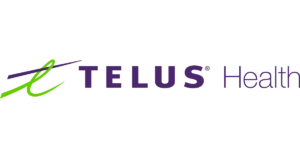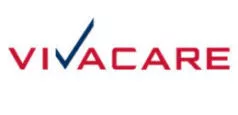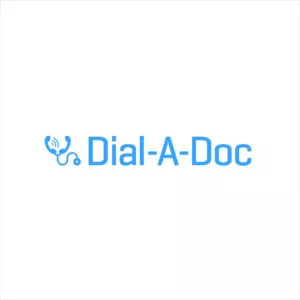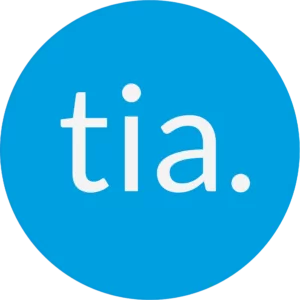
The Best Telehealth Providers & Online Doctors in Canada
The best online doctors in Canada
In this particular guide, we will review and compare the top telehealth companies available in Canada – including their advantages and disadvantages, features, fees, and coverages within each province. Not all telehealth companies are equal, and some are only helpful in specific provinces, so be sure to double-check that the one you’re interested in works in your province.
What is telehealth?
Telehealth at its base, is the use of digital communication such as computers and mobile devices to access healthcare services and health information remotely. It connects doctors to patients via videoconferencing or text messaging in a confidential and convenient manner, just like a regular doctor’s appointment – except that you don’t have to go into the office!
This option can understandably be more comfortable for people and generally is more cost-effective. Even though it’s free for Canadians to access healthcare, the downsides of taking days off work, travel, and child-care costs to see your physician in person can add up to cost quite a bit. The main drawback of course is that depending on the issue at hand, there are always some things that your doctor may need to check in person.
But overall, it can still help diminish the stress of making several appointments for a single issue, and if you do need tests done, you can know at home and then schedule your appointments from there. Much easier to sort and plan ahead of time.
Pricing: How Canadian telehealth providers compare
Telehealth Service |
Fees/coverage |
| Mednow.ca | Covered under OHIP, UHIP, and IFH. |
| Livecare | Available through your doctor’s office. |
| CloudMD | BC users are covered by MSP; Ontario users are covered by OHIP. |
| Teladoc | No costs (offered as part of employee benefits or private health insurance.) |
| WELL Health Technologies |
|
| Maple | MSP-covered in BC; covered by some extended health benefits plan. Otherwise,
|
| Dialogue | Only accessible if the employer has signed up. |
| Akira by TELUS Health | Only accessible if the employer has signed up. |
| Viva Care | No cost for BC residents. |
| Appletree Medical Group | Covered under OHIP. $75 flat rate fee for anyone not covered by OHIP. |
| Telehealth Ontario | Free for all users in Ontario. |
| Medeo Virtual Care | Available through your doctor’s office. |
| Dial-A-Doc | Covered under OHIP. |
| Virtual Clinics | Covered in Alberta, BC, and Ontario with a valid health card. |
| Felix | $40 online visit fee. |
| Tia Health | Free in Ontario, Alberta and British Columbia with a valid health card. |
| Inkblot Therapy | $37.50 per 30-minute session. The first session is always free until you find the right fit. |
| GOeVisit Smart Exam | Subscription:
Pay as you go:
|
| Babylon by TELUS Health | Free for residents of Alberta, British Columbia, Ontario, and Saskatchewan. $70/virtual consultation for patients without provincial health insurance in these provinces. |
| Hasu |
|
| Beacon |
|
| Tulip Health | Free for all Ontario residents with a valid OHIP card. |
| MediCall | Covered under OHIP, IFH, UHIP and if you’re a member of the Canadian Armed Forces with valid coverages. |
Telehealth in Canada
A societal shift starting with the Covid-19 pandemic, online and remote work made waves – and that included things like healthcare: replacing in-person services with their online versions whenever possible – including virtual appointments with healthcare physicians.
Statistically, the use of telehealth services has rocketed since the pandemic was announced back in March of 2020. With most people having to stay at home, it made sense to contact a medical physician virtually, especially for simple things like colds and flu diagnosis. Before the pandemic, 4% of Canadians used telehealth services, and since March. 2020 it was gone up to 47%. Many telehealth companies in Canada went from dozens of customers to thousands of patients in a couple of months. This scenario also contributed to new telehealth companies being launched or rebranded across Canada.
As the pandemic starts to slow, telehealth remote services still have a larger user base than they did before, as more and more people preferred to reach out and use them instead of taking time out of their days to physically go to the doctor’s office.
Most provinces in Canada offer telehealth networks funded by the provincial government. Besides private telehealth services available for fees, anyone across Canada can call 811 at any time 24/7 to speak to a registered nurse for health information.
Telehealth Wait Times in Canada: The wait times vary between province and service used, anywhere from a few short minutes to several days depending on where you’re located and what app or service you’ve decided to work with. However, instant appointment telehealth services are increasingly accessible in Canada.
For information on the rules and regulations in your province, the Federation of Medical Regulatory Authorities of Canada (FMRAC) has a full guide on the recommendations and minimum regulatory standards for physicians.
There are telehealth providers for all sorts of different preferences in the guide below, so you’ll probably be able to find the best online health service in Canada suited to your needs by the end of this article.
DISCLAIMER: The products are not presented in any particular order.
Mednow
Mednow is a proudly Canadian online pharmacy website, allowing Canadians to get their prescriptions online fast, simply, and with free shipping anywhere in Canada.
In less than a few minutes you can transfer your prescription refills from your old pharmacy or snap a photo of your current prescription to get started. You can also call in by phone if that’s easier for you. You get real-time delivery notifications on the status of your prescription deliveries, and they guarantee a fast, contact-less experience.
Greater Toronto and Greater Vancouver area users can expect their prescription as soon as the same day in most cases, and Ontario and BC can expect the next day or sooner. All other provinces will still have free shipping, though it can take a bit longer to get your package by mail.
Pharmacists are available through Mednow.ca, 24/7 for support. Phone, video calls, and text-based interactions are their options. If you don’t feel like calling, you can text, or if you’d like a video call for a more personable interaction, you can do so. They can also connect you to an available virtual doctor if needed.
You may however be charged for a doctor’s visit, depending on your provincial coverage. Ontario and BC may be covered with valid health card identifications.
Pros
- 24/7 support for the pharmacy.
- Quick and easy set-up.
- Free shipping within all of Canada.
Cons
- Virtual doctor appointments may not always be covered by provincial insurance.
Livecare
Livecare is the first and still only telehealth company that is owned and operated by physicians. With their KindredPHR system, you can access medical providers with just a few clicks from the comfort of your own home, meaning that you don’t have to run around for appointments or waste hours out of your day waiting to be seen.
The difference between Livecare and other telehealth providers is that they’re available through your own doctor’s office if they’re signed up for it, as opposed to connecting to a random one online that you don’t know. If your current doctor hasn’t signed up for Livecare, you can request them to check out the website and apply.
You can control who views your medical records, store all of your files in one place on their server, and even access online journals, health trackers, and calendars to help manage your health better. They include services for mental health, sign-ups for employers and insurers, and help remote communities connect more easily.
Pros
- Owned and operated by physicians first.
- Wonderful support staff.
- Is usually covered by provincial insurance.
Cons
- Only available through your own doctor’s office and not a standalone telehealth provider otherwise.
CloudMD
CloudMD is currently only available in BC and Ontario and they serve patients that are without a family doctor or those who are looking for medical care after hours. They’re available for general health questions to help manage care for your family. Prescription renewals, diagnosing non-emergency conditions such as colds and flus, fever, headaches, skin conditions, UTIs, etc.
You can access the app on Android, iPhone, and on desktop computers and start using it free of charge. Doctor consultations are covered by MSP in BC and OHIP in Ontario. If you’re not using a Wi-Fi network you may have data charges.
They have a national network of doctors that are all Canadian licensed and are qualified to practice family medicine in the relevant province and are registered with the College of Family Physicians of Canada.
Pros
- Accessible through Android, iPhone, and PC.
- Offers mental health services as well.
- Helpful and friendly support staff.
Cons
- Appointments are not covered in other provinces, though you can still access their services.
Teladoc
Teladoc provides 24/7 access to licensed doctors by phone, video, or the web wherever you are. Once you request a visit, a doctor will contact you within an hour to chat, diagnose, and even prescribe medicine if need be. They cover non-emergency healthcare issues like sinus problems, allergies, flu/cold symptoms, more. If you’re located in Quebec consults can only be conducted via video, not just phone calls.
Teladoc is only available through your employer or insurer, and you can check if you have access and are covered by filling out their quick account setup, whether online, downloading the Teladoc app, or calling them at 1-888-983-5236.
Using their services are free and can be accessed 24/7 even if you’re travelling in the United States, though if you need a prescription you need to consult your travel coverage beforehand.
Pros
- Free for all Canadians.
- Can be accessed 24/7.
- Can be used abroad in the United States while travelling.
Cons
- Only available through employer or health insurance such as Blue Cross that covers it – otherwise you cannot access their services.
WELL Health Technologies
WELL Health Technologies is both a primary healthcare operator and a technology innovator combining professional healthcare expertise with technology to better help physicians and patients that result in improved experiences and health outcomes.
WELL’s main clinics offer virtual telehealth as well, and is covered in BC, Alberta, and Ontario with a valid health card. All you need to do is book with a doctor, connect through phone, video, or secure messaging, and once the appointment is done you receive referrals, requisitions, prescriptions, or any other documents you might need. Free delivery on prescriptions in Canada. There’s an option to book with your own family physician as well if your doctor is signed up for it to access.
For Canadians outside of BC, Alberta, and Ontario WELL Clinics offers their telehealth services for $30 with no additional fees.
Pros
- Affordable.
- Anyone within Canada can access it.
- Fantastic support staff and FAQ
Cons
- There is a $30 charge outside of BC, AB, and ON
Maple Telemedicine
Maple is an app designed to quickly and easily connect you with a doctor and get you on your way to feeling better. It’s free to register an account, and costs $49 once you request an appointment if you’re not covered by your employer or insurance.
You can log into maple either on desktop or through their mobile app, describe your symptoms and describe what you’d like help with. Once the doctor reviews your request, they’ll determine whether they can help with what you need, and if so will continue the appointment. Afterwards, any prescriptions or sick notes will be available within the Maple app and prescriptions can be either delivered to your home or automatically faxed over to a nearby pharmacy for pickup.
They can treat all manner of issues including bladder infections, UTIs, colds and flu symptoms, skin issues, and more. Psychiatry, pediatrics, and allergy and immunology are also on the list for what they can specialize in.
In case you’re curious to see how Maple compares to other Canadian telehealth services, they have a dedicated page to such comparisons. As posted on their official website, here’s how Maple compares to other popular providers:
- Maple vs. WebMD: Maple works 24/7 as a virtual medical care platform via phone or computer, whereas WebMD is mainly focused on medical information and news.
- Maple vs. Ask the Doctor: Maple enables you to instantly connect with Canadian doctors, whereas Ask the Doctor is an email Q&A service in which you can ask questions and wait for a doctor to respond for a fee.
- Maple vs. Telehealth Ontario: Maple allows you to instantly connect with Canadian doctors 24/7, whereas Telehealth Ontario connects you to a Registered Nurse for questions, but it doesn’t replace a doctor’s visit.
- Maple vs. Access Virtual: For BC residents, both Maple’s and Access Virtual’s telemedicine services are free under the Medical Services Plan (MSP), but Maple is also available through the BC Services Card.
- Maple vs. Babylon Health: Maple enables you to connect with a doctor anywhere, anytime, whereas Babylon by TELUS Health lets you check symptoms and book video consultations with a doctor.
Pros
- Free to register.
- Any Canadian can access and use this service.
Cons
- $49/visit if not covered by your health insurer or employer.
Dialogue Technologies
Dialogue is accessible for patients through their app or website if your employer has signed up to allow access. They cover all sorts of physical healthcare questions, issues, and even handle stress and mental health concerns, allowing you to feel and work better.
Medical professionals that work with Dialogue are dedicated to it, allowing for continuity with patients so that you don’t have to explain your situation or symptoms over and over again with a new physician every time you require an appointment. The team is multidisciplinary, helping achieve a better clinical approach for full patient assessments whether you have chronic issues or something more acute.
They use the highest standards of safety and security, and their platform allows for patient history to be accessed for an easier and more efficient consultation with their teledoctors.
Pros
- Offers continual care and access.
- Available in every province.
Cons
- Only accessible if your employer has signed up for access.
Akira by TELUS Health
Telus’ Akira App
Access is available to employees of organizations that have purchased Akira as part of their employee benefits plan, and to the immediate family members of those who are covered – a spouse or partner, and any dependents under the age of 26.
Their telehealth service is available 24/7 across the country in every province and territory and can also be used outside Canada for counselling and diagnosis. Prescriptions and referrals cannot be done outside of the country, however, so if you’re in the United States for any reason just keep that in mind.
The app is designed to complement the care patients already receive from their family doctor, or those who don’t have a family physician already. If you have a family physician, you can provide consent for them to be updated on your health as you use Akira.
You can connect by text if that’s more comfortable for mental health conversations and can be more convenient if you’re out and about somewhere or at work where a phone call conversation could be disruptive.
Pros
- Available 24/7 in Canada.
- Works to complement care from/with your doctor.
Cons
- Only available if your employer signed up for it.
Viva Care
If you’re a resident of BC, you can access Viva Care’s telehealth services for free seven days a week, 8 am to 9 pm, no matter where you live. They’re one of the only groups in BC where you can see a doctor online through the telehealth system and have the opportunity to see the same physician in one of their clinics in person if need be or if wanted in the future.
They offer their teledoctor services in English and French, but also include Cantonese, Hindi, Korean, Mandarin, Punjabi, Tagalog, and Urdu. You can consult a doctor directly from your smartphone, tablet, or desktop computer and can see a doctor within minutes without any of the doctor’s office waiting.
Like other telehealth clinics, you can get your prescription sent to your door for free or faxed over to your closest pharmacy. They do have a 24-hour notice for cancellations or reschedules, and there is a $50 fee if you no-show or cancel after that time before your appointment.
Pros
- Available in multiple languages.
- Calls/texts available within minutes, generally.
Cons
- Not available in other provinces; Available in BC only.
Appletree Virtual Care
Founded in 1992, Appletree Medical Group is one of Canada’s largest multi-specialty groups and now offers teledoctor services for free to any Ontario residents. They do provide services for Canadians outside of the province, but it isn’t free and would have to be reimbursed by your provincial healthcare.
Not all medical services are covered by OHIP, but they do have a private services price list on their website. As with all telemedicine, they cannot help with certain medical issues that require hands on exams like pelvic exams, abdominal pain, sutures, and they can’t prescribe controlled substances like narcotics.
If you don’t have OHIP coverage, the cost of the appointment is $77. Telemedicine appointments are covered by most private benefit plans. Virtual care and telemedicine are different services through Applecare, telemedicine appointments are done in a dedicated examination room with a trained telemedicine assistant relaying information such as checking your ears, eyes or mouth, blood sugar tests, etc. to the doctor over a screen, while virtual care allows you to connect with a doctor via smartphone, tablet, or desktop computer.
Pros
- Free for Ontario residents.
- Great help and staff if you have any questions.
Cons
- Not accessible for other provinces, only Ontario.
Telehealth Ontario
Telehealth Ontario is offering free and fast medical advice via phone to those living in Ontario.
Telehealth is open at any hour of the day, every day of the week. A registered nurse is always available to take your call and help you decide whether to handle whatever medical issue you’re having yourself, visit your family doctor, or go to the ER.
On their website, there is information about Covid-19, including a self-assessment which can help you determine how to get further care and get tested. At this time, they only offer over-the-phone care and don’t have any more in-depth services.
Telehealth Ontario toll-free phone number: 1-866-797-0000
For other provinces besides Ontario, the Canadian Women’s Health Network has a full guide on similar programs.
Pros
- Free for Ontario residents 24/7.
- Great care and help.
Cons
- Only available in Ontario.
- At this time, they only take calls for telehealth appointments, not texting.
Medeo Virtual Care
Instead of connecting you to a clinic, Medeo connects you to your family clinic/physician you already go to. When both you and your healthcare provider are both registered, Medeo creates a direct line of communication from quick online booking to checking your symptoms, to a follow-up about your test results.
When both you and your doctor use Medeo, you can securely exchange photos, messages, and share files, making it easier to do quick follow-ups, instead of having to schedule time off work or waiting for hours in an office. It’s helpful for virtual video calls as well if your doctor offers them, saving time and money.
Pros
- Access to all medical records.
- Easy communication with your doctor.
Cons
- Only available if your doctor is signed up for it.
Dial-A-Doc
Dial-a-Doc is a no-frills virtual care website covered by OHIP, if you’re an Ontario resident, that requires no account sign-up or personal information required to sign up for their virtual clinic. You can sign in with just a phone number, name and email are optional.
They cover Covid-19 assessment and counselling, prescription refills, UTI treatments, Cold and flu symptoms, aches, sprains, rashes, etc. that don’t require emergency care. Once you fill out their quick form, a licensed Ontario doctor will get back to you within 24 hours.
Pros
- Easy sign-up.
- No fuss throughout the entire process.
- Helpful support staff.
Cons
- Only available in Ontario.
Virtual Clinics
Virtual Clinics is part of WELL Health Technologies Corp.’s brand of virtual care. Virtual Clinics is free for BC, Alberta, and Ontario residents, can be reimbursed if your insurance covers it, and is otherwise $30+ for non-BC, Alberta, or Ontario residents across Canada with no hidden extra fees – though they are working to make this available for free for other provinces.
You can choose which doctor you want to see via phone, video, or secure messaging from wherever you are, and there is no added or extra fee if your appointment time goes longer than expected. They’re available 24/7 to access, and if your family doctor is working with the Virtual Clinics platform, you can ask to speak to them through telehealth availability.
Just like a regular doctor’s office visit, the doctors are licensed and are responsible for understanding your case, medical history, and determining the appropriate treatment. If they aren’t able to help you they may advise you to make an in-person clinic appointment or visit a hospital.
Prescriptions can be delivered to your home for free across Canada or can be sent to a pharmacy near you for pick-up.
Pros
- Affordable.
- Available for every Canadian in any province.
Cons
- $30/visit outside of BC, Alberta, or Ontario.
Felix
Felix offers an easy and virtual way for Canadians to get lifestyle medications such as birth control, hair loss, and acne medication. Based on your medical history and consultation, you can get a prescription within 24 hours.
How it works is that you create an account, set up your profile, and submit your medical history, allergies, and current symptoms – if you have any. Your submission will be confidentially reviewed by a physician within 24 hours. After that, you can choose what your preferred medication is and an auto-refill schedule that works best if you want.
You can chat with the doctor to answer their questions and ask your own, with no rush. It does cost a $40 fee for your online visit, but medication is shipped to your door at no cost and is good for up to one year.
Pros
- Lifestyle medication and help available.
Cons
- $40 online visitation fee.
Tia Health
Tia Health allows patients to connect with doctors in Canada by phone, video, or secure messaging on any device. You can choose your own doctor from their list of physicians, including language options for what you’re most comfortable speaking. Besides prescriptions, referrals, requisitions, and mental health services they’re also offering COVID-19 screening.
A benefit for anyone residing in BC, Alberta, or Ontario is that Tia Health is covered, while fees start at $30 for other provinces. At the time of your appointment, you speak directly to the doctor, no waiting or wasting time going into a clinic, travelling, or having to take time off work instead of resting. Referrals, requisitions, and any other documents you need are all online.
An added bonus is that free prescription delivery is available in Canada.
Pros
- Anyone within Canada can use it.
- Available 24/7.
Cons
- $30 fee outside of BC, Alberta, or Ontario.
Inkblot Therapy
InkBlot Therapy is a virtual therapy platform that allows you to speak with a licensed counsellor, social worker, therapist or psychologist who are in good standing with their board. They’re experienced in various clinical settings and must obtain specific designations to practice.
Before booking your appointment, you’ll fill out a quick matching questionnaire that combines your personal details with the strengths of their providers that best match your needs and preferences. The first half an hour is free to ensure that you’re satisfied with your care provider, and if not you will be able to choose a different one from a list, which that subsequent first half-hour with them will also be free.
Sessions through InkBlot are $37.50 per half hour, after your initial free 30 minutes. Sessions can last 30, 60, or 90 minutes. Most employee health benefits, private insurance, and student health plans cover counselling and psychotherapy, meaning that InkBlot may be covered completely by your insurance, so do make sure to check if you are.
No external software is needed, just a microphone and a camera on your computer or laptop so that your care provider can both see and hear you during the session. They provide life-coaching and couples counselling as well as general therapy sessions. Covering everything from adjusting to a crisis or difficulty, setting goals, identifying negative patterns and adjusting them to be healthier, etc. Therapy can benefit everyone and doesn’t need to be a long-term process if that isn’t what you want or need – it can be a one-time session to get things off your chest, temporary support during a life transition or an ongoing experience.
Pros
- Affordable mental health help.
- Very friendly staff and easy system to use.
Cons
- $37.50 each half-hour after the initial appointment.
GOeVisit Smart Exam
GOeVisit Smart Exam is a free app available for both Android or Apple that allows you to quickly fill out a clinical interview form describing your symptoms from your phone, tablet, or computer that will give you a diagnosis from a licensed healthcare practitioner.
Depending on wait times, you can hear back from a physician within minutes of submitting your request and information. An after-visit summary is automatically sent to you via a secure link once you’re done with all of the information, and any prescriptions you might need are automatically delivered to a pharmacy of your choice.
For Canadian residents over the age of 18, services are available for $10 per month, $99 annually for unlimited visits, $15 per month for families, $149 annually (for immediate family members.) Subscription services aren’t available for international users. There is also a pay-as-you-go pricing option that is $49.95 per visit for Canadian residents, Canadian families, or international visitors.
Pros
- Available for anyone across Canada.
Cons
- Annual cost of $10 or more, or $48 per visit.
Babylon by TELUS Health
Babylon by Telus Health serves anyone that is looking for medical advice or care outside of regular office hours or doesn’t have a family doctor. Virtual consultations are free for residents in British Columbia, Alberta, Saskatchewan, and Ontario, in addition to anyone covered by BusinessPlus.
They can treat any manner of symptoms from rashes, colds, flus, and other typical issues of the sort, including refilling prescriptions. Anyone that is residing outside of the earlier four provinces can access Telus’ Babylon services for $70 per doctor consultation visit.
It’s available on smartphones, both Apple and Android, and all that’s required is a working phone that will run the app.
Pros
- Easy to access.
- Symptom Checker AI + Symptom monitoring available.
Cons
- $70 in other provinces.
Hasu
Hasu provides Canadians with mental health and substance abuse counselling across the country. Therapists are properly vetted, registered, and qualified to help with anything from depression and anxiety to substance abuse and gambling addiction.
Many of their therapists are covered by major Canadian insurance companies, so feel free to check if you’re covered for reimbursement while signing up. How it works is that you choose an appointment type, choose the therapist you want to work with, the date and time that works best for you, confirm payments, and then have your session on your allotted date.
Hasu is available on iOS, Android, and desktop PCs. Depending on what kind of appointment you’re comfortable with you can have webcam video sessions, talk counselling only needing a phone, or even secure text messaging.
The cost is $95 for a video or talk sessions, and Unlimited Text Talk messaging is $29 per month. A minimum 24-hour notice is required if you need to reschedule or cancel an appointment.
Pros
- Specializes in several areas.
- Unlimited text is available.
Cons
- Can be pricey for some if not covered by insurance.
Beacon
If you’re an Ontario resident, therapy is currently available during Covid-19 with BEACON funded by the Ontario government. BEACON is a therapy for you when you need it and wherever you are.
It’s available in English and French, and once you confirm that your employer or benefits plan covers BEACON, you start an assessment that can take 10-35 minutes to fill out. For those who aren’t covered by insurance, they offer affordable payment plans.
The assessment portion is an important step in the process, as it first allows your therapist to determine if working through Beacon is right for you, and secondly, it allows them to see valuable information about your life and circumstances that make it easier to communicate and have a personalized CBT session with you.
Beacon is best for anyone that would like help with anxiety, depression, PTSD, and insomnia. They don’t treat substance abuse or eating disorders and ask that you choose a different therapy provider.
Pros
- Available for all Canadians.
- Anywhere at any time.
Cons
- Does not provide help for all mental health categories.
Tulip Health
Tulip Health allows anyone in Ontario to access an Ontario licensed doctor at any time for an online virtual appointment, and it is 100% covered for any Ontario resident.
Connecting you directly with an Ontario doctor, Tulip Health is a quick and free telehealth service that provides you with information and helpful results such as answers to any questions you may have, prescriptions, and they even do follow up appointments after you’re done with your initial appointment.
It’s available through smartphone or PC, and their hours are Monday to Friday, 9 am to 9 pm, and Saturday and Sunday are 9 am to 8 pm. When registering your appointment, you can choose which time works best for you and if there isn’t a slot available they will let you know and allow you to choose a new time.
Tulip Health also does Covid-19 screening, and mental health assessments and the doctors’ backgrounds range from family medicine, pain management, sports medicine, and long term care – ensuring that no matter what you require help for, there will be a doctor that’s fit for your care.
Pros
- Easy registration.
- Quick responses.
Cons
- Not available outside of Ontario.
MediCall
MediCall is an OHIP covered virtual clinic available to Ontario residents that acts as a stand-in for your family doctor if you can’t get in to see them, or if you currently don’t have a family doctor – you can use them until you do find one.
Virtual visits are 100% covered through OHIP, IFH, and UHIP. Uninsured patients are also covered as well. Home visits are also available, and priority will be given to elderly and housebound patients. That is covered as well as long as you have a valid PIP (provincial insurance plan). Covered for refugees with valid coverage under IFHP, covered with valid coverage from UHIP, and covered if you’re a member of the Canadian Armed Forces with valid coverages.
Home visits otherwise if not valid coverage, are $75 per individual. Sick notes are $20, and notes for anyone needing massage, physio, chiropractic, or compression stockings are $20 as well, unless they are already a part of management currently.
Pros
- They do referrals to specialists, bloodwork, and imaging.
- Prescription and medication refills within 24 hours.
Cons
- Only for Ontario residents.
- Not an emergency clinic.
COVID and the telehealth boom
How the pandemic turned telehealth into a booming industry
Over the past decade, Telehealth has grown steadily as an industry. According to Global Market Insights, the market size in 2019 was around $45 billion and is projected to grow more than $175 billion by 2026.
Before the Covid-19 pandemic, Canadians (and most other countries) were slow to pick up on using telehealth services but now with social-distancing measures in place, quarantines, and people not wanting to go out – it could push telehealth interactions to one billion users by the end of 2020.
According to a poll released by the Canadian Medical Association (CMA), Canadians embraced telehealth services like phone or video appointments since last March, suggesting that at least 47% of Canadians have used virtual care services during the pandemic so far and 91% were happy with their experience.
This technology can help assist with simple diagnostics, and free up waiting room time in clinics for both doctor and patient. Despite signs of telehealth and telemedicine growing rapidly over the last year, Canada is still in the early days of adopting it for more widespread use. Loblaws has invested $75 million into telehealth for Shoppers Drug Mart customers for example, and the federal government has earmarked $13.4 million to fund three Toronto-based companies and innovation hubs aimed at supporting digital health treatments, including telehealth services.
Frequent telehealth questions
Are teledoctors a good option for kids?
Telehealth appointments can be a great option for kids (and parents) for most issues that come up over the years such as colds, flus, rashes, pink eye, allergies, and follow-up visits. They can also help with mental health such as anxiety or stress – which can be important during a global pandemic.
The main benefit is that you don’t have to haul kids to a waiting room, especially if you have more than one or your sick child is feverish or vomiting and it would be better to keep them put until you get guidance from the doctor. Unless of course, it’s an emergency, in which case it’s best to head to the ER or urgent care.
Is telemedicine legal in Canada?
Telemedicine is legal in Canada. Physicians are only allowed to practice in the province or territory in which they have a license, therefore if patients and physicians are in different jurisdictions, physicians must make sure that they are allowed to practice telemedicine in the patient’s jurisdiction.
What is the cost for Teladoc?
Teladoc is free and can even be accessed if you’re visiting the United States as well. There might be a cost if you require a prescription though, especially while in the US.
How much does telemedicine cost?
The price varies depending on where you’re located and which telemedicine provider you use. Some services such as Tia Health are covered within provinces like BC, Alberta, or Ontario, while others such as Teladoc are free to use regardless of where you are. Prices range between $0 and upwards to $40.
Is telehealth cheaper than an office visit?
Yes and no. While most health care provided in Canada is free, depending on what province you’re in and which telemedicine provider you go with, Telehealth may not be covered or entirely free. That said, it can still be much cheaper than a doctor visit if you need to schedule time off work, pay for child-care, travel, or pay for things like parking depending on where your doctor clinic visit may be.
Telehealth vs Telemedicine: What’s the difference?
Telemedicine appointments are done in a dedicated examination room with a trained telemedicine assistant relaying information such as checking your ears, eyes or mouth, blood sugar tests, etc. to the doctor over a screen, while telehealth allows you to connect with a physician via smartphone, tablet, or desktop computer and there is no need to go into a clinic.
What are the benefits of telemedicine services?
The benefits of telehealth or telemedicine services are lower wait times, no need to travel, take time off work, bring your children to a busy doctor’s office, or be stuck waiting for office hours since many telehealth apps or sites are available 24/7 any day of the week.
Do I need Wi-Fi for telehealth?
Generally speaking, yes. Mobile data if you’re using a smartphone outside of Wi-Fi areas. If you’re not using Wi-Fi, you may get charged for data use depending on what your telehealth app or visit requires, like video conferencing or sending images.
Do I need a camera for telehealth?
Not necessarily depending on how you’re communicating with whichever telehealth app or website you’re using, and what your reason for contacting a physician is for. If it’s for something like a rash or other visual concerns, then, yes, a camera is encouraged for accurate results.
Read more

The Best Mosquito Repellent & Bug Sprays in Canada
Check out what all the buzz is about and never let pests ruin another hiking trip again!

The Best Online Pharmacies in Canada
A virtual pharmacy is a convenient and efficient way to purchase medications.

The Best Reusable Face Masks in Canada
Prevent the spread while supporting Canadian businesses with a selection of reusable fabric masks with a variety of designs available.

The Best Massage Gun in Canada
Massage guns can be quite effective when you can’t see a massage therapist.


